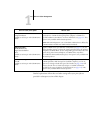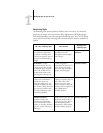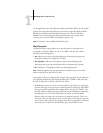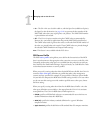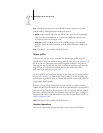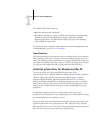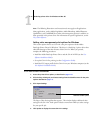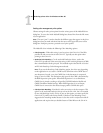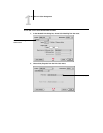
1
1-14 GA-1121 Color Management
• Full (Source GCR) provides a complete and accurate simulation based on colorimetric
transformations. Hues are preserved, even for primary colors. The Gray Component
Replacement (GCR) level that was specified in the original (source) document is
also preserved. Full (Source GCR) is therefore an excellent simulation technique for
the highest quality press proofing applications.
•
Full (Output GCR) is also a complete and accurate simulation method based on
colorimetric transformations. Hues are preserved, even for primary colors. With this
method, the Gray Component Replacement (GCR) level that was specified in the
original document is not preserved. Instead, all CMYK data is reseparated using the
GCR level specified by the Output Profile. This simulation technique is similar to
traditional ICC color matching methods and is appropriate for most documents
designed for the press, but reproduced on your copier/printer.
NOTE: When you specify On for Pure Black Text/Graphics, and specify Full (Output
GCR) for CYMK Simulation Method, the black text and graphics in your document
are printed with 100% black-only toner.
NOTE: This feature is not available with the PCL driver.
RGB Separation
The RGB Separation option determines how RGB colors (as well as Lab and XYZ
colors) are converted to CMYK. The name of this option is meant to be descriptive,
since the option defines the color spaces that will be used by the GA-1121 to “separate”
the RGB data into CMYK values.
The two choices available for this option determine whether RGB data is converted
into the full gamut of the copier/printer (output) or is first converted into the gamut
of another digital printer or press standard (simulation). This feature is helpful for
making one device behave like another for RGB data. For example, if a high-quality
ICC profile is available for another print device, the copier/printer can simulate the
behavior of that device.
RGB Separation is also useful for prepress applications. For example, it allows you to
experiment with the appearance of an RGB scan under different press printing
conditions, without having to convert the RGB data to CMYK data for each
condition. When the desired printing condition is found, convert the file to CMYK,
using the same CMYK simulation profile you used during the experimentation.



